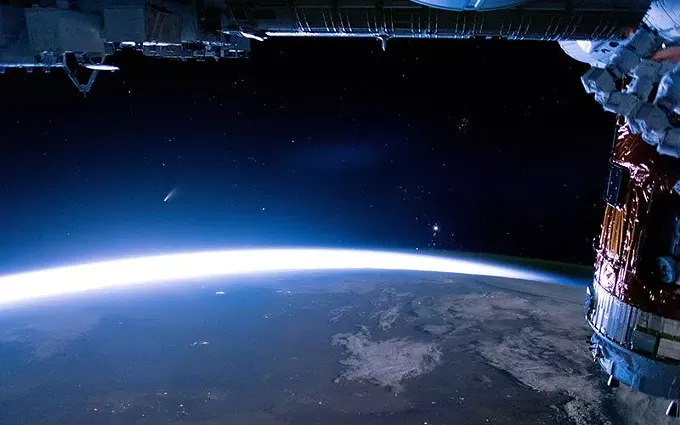PHOENIX – Arizona skywatchers have been over the moon about a comet that has graced the night sky since July 11.
Comet NEOWISE was discovered March 27 by Amy Mainzer, principal investigator on NASA’s Near-Earth Object Wide-field Infrared Survey Explorer mission, and her team at the University of Arizona.
“We’re specifically interested in what we call ‘near-Earth objects,’” Mainzer said. “These are the asteroids and comets that come within about 1.3 times the distance from the Earth to the sun.”
The 3-mile wide ball of ice, dust and rock survived a close approach to the sun and is headed toward the outer edge of our solar system before starting another very long trip around the sun. Unlike a shooting star, viewers have a chance to view the comet for longer than a split second.
“This comet, even though it’s traveling at enormous speeds, you’d think, given this incredible speed, that it’d be gone in an instant,” Mainzer said. “But space is so big, that even at that incredible speed, it still takes an appreciable number of days to traverse the sky.”
Comet NEOWISE – Near-Earth Object Wide-Field Infrared Survey Explorer – has been visible for days but it will be closest to Earth an hour after sunset Thursday.
Despite the distance, said David Schleicher, a senior astronomer at Lowell Observatory in Flagstaff, the comet won’t be especially bright.
“Because it’s been moving away from the sun, it has been systematically getting fainter,” he said.
To see Comet NEOWISE, look northwest just below the Big Dipper about an hour after sunset.
“If the Big Dipper is visible by then, it is directly on a line between the (bottom) bowl of the dipper and the horizon,” Schleicher said.
You’ll need to get away from city lights, and for the best view, use binoculars. Mainzer said the comet will be visible for a while, but the next few days will be the best because the waxing moon will start to brighten the night sky, making Comet NEOWISE tough to spot.
“This comet is one and done,” Mainzer said. “It orbits the sun about every six or seven thousand years. So this is our one opportunity to see it before it’s gone for a really, really long time.”
[
{
"name": "Air - MedRect Combo - Inline Content 1",
"component": "29441156",
"insertPoint": "1/3",
"requiredCountToDisplay": "9",
"parentWrapperClass": "fdn-ads-inline-content-block"
},{
"name": "Top Stories Video Pair",
"component": "27651162",
"insertPoint": "10",
"requiredCountToDisplay": "1",
"parentWrapperClass": "fdn-ads-inline-content-block"
},{
"name": "Air - MedRect Combo - Inline Content 2",
"component": "29441158",
"insertPoint": "2/3",
"requiredCountToDisplay": "10",
"parentWrapperClass": "fdn-ads-inline-content-block"
},{
"name": "Air - MedRect Combo - Inline Content 3",
"component": "29441159",
"insertPoint": "1000",
"requiredCountToDisplay": "15",
"parentWrapperClass": "fdn-ads-inline-content-block"
}
]


